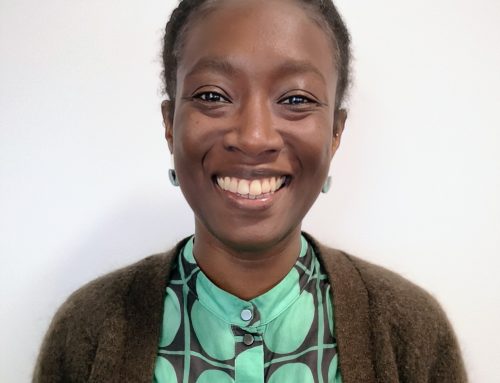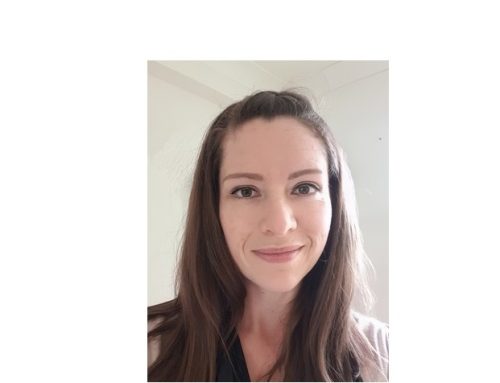Professor Roger Greenberg’s lab is devoted to understanding basic mechanisms of DNA repair and their impact on genome integrity, cancer etiology, and response to targeted therapies. Ahead of our upcoming seminar with Professor Roger Greenberg, we sat down to discuss his reasons for choosing the topic of DNA damage, his hopes for future scientific developments, and what he is most looking forward to about the CRUK RadNet City of London seminar series.
– For our upcoming seminar, you have chosen to focus on the communication between DNA damage and immune response. Why you’ve chosen this topic and why you think it’s an important subject to be talking about?
This is a fascinating topic that speaks to many issues related to disease etiology and therapy. It involves the communication of DNA damage from individual cells to the entire organism. We were originally interested in this topic because of longstanding observations that radio- and chemo- therapies were less effective in immune deficient mice. What it indicated was that DNA damaging modalities necessitate an immune response against the tumor in order to maximize their clinical efficacy. At the time, the basic question of how DNA damage in the nucleus communicated with the immune system was enigmatic to say the least. Different DNA damaging agents elicit a robust response to the damage within seconds. On the other hand, it was known to take days for DNA damaging agents to cause an inflammatory response that could attract immune cells. We demonstrated that passage through mitosis in the presence of a damaged genome was the gatekeeper to this response. This occurs in part by missegregation of damaged chromosomes into the cytoplasm where they are subsequently recognized by proteins that typically sense viral DNA. Passage through mitosis to activate these pathways is also necessary for a systemic immune response to irradiated tumors.
Interestingly, there is a second component to this response that involves RNA recognition by additional RNA-sensing pattern recognition receptors. We are currently trying to understand how mitotic progression creates immunogenic RNA species in the cytoplasm. The work has many implications for radio- therapy. We can enhance this response by driving cells into mitosis, whereas a low mitotic index or loss of specific pattern recognition receptors reduces it. It’s an exciting prospect to be able to harness the immune system to increase responses to cancer therapy in a rationally designed manner. I am certain there are many important discoveries remaining.
– Can you tell us more about the methodologies you’ve developed to help visualise the major steps of homologous recombination?
Homologous recombination is a fundamental mechanism for error-free repair of DNA damage. It is essential for genome integrity from bacteria to humans. This classically occurs in a manner that depends on the breast and ovarian cancer suppressor proteins, BRCA1 and BRCA2. When these genes are mutated, genome instability arises and mutation carriers have a high risk of cancer development. Interestingly, some cancers acquire an unusual form of homologous recombination and use this to maintain their chromosome ends (known as telomeres) during each cell division. This process is called ALT and occurs in approximately 10% of cancers, often portending a poor prognosis. ALT does not rely on BRCA1 and BRCA2, but is instead executed by a poorly understood recombination mechanism.
We developed a system to study ALT by directing a nuclease specifically to telomeres. This creates DNA double-stranded breaks at the telomeres and initiated the ALT process in a relatively synchronous manner, which allowed us to visualize the process in real-time. What we showed in a series of publications is that damaged telomeres move large distances in the nucleus before pairing up with telomeres on other chromosomes to form recombination centers. This resulted in homologous recombination DNA synthesis for up to 70 kilobases, or to the end of the chromosomes. We developed the methods to visualize the telomere mobility and synthesis as it occurred and named this process Break Induced Telomere Synthesis (BITS). In unpublished studies, we’ve extended this capacity to monitor homologous recombination by purifying the entire DNA damage response on the broken telomeres. We are currently investigating how this response allows telomeres to execute the unusual form of recombination during ALT.
– How do you hope your research will benefit patient outcomes?
As a basic scientist, my mission is to understand how processes work at a molecular level and how this affects both cell autonomous and organismal behaviors. Asking fundamental questions at this level is always the first step in what I do. We try to relate this to human disease whenever possible, often in collaboration with more translationally oriented investigators. This has led to identification of gene mutations responsible for cancer predisposition and also for developmental syndromes. We’ve also discovered new drug targets that create selective vulnerabilities in BRCA and other homologous recombination deficient cancers, and revealed approaches to combine DNA damaging agents with immune therapies that have inspired clinical trials. We make efforts to work with clinicians and the biotech sector to develop our basic findings into therapies that can benefit cancer patients.
– What research developments do you most hope to see in your field within the next decade?
The DNA damage response field is developing at an extremely rapid pace. It is an incredibly exciting topic and I would argue one of the most intellectually challenging aspects of biology. There has also been a renewed enthusiasm for targeting the DNA damage response for cancer therapy. I hope to see a better understanding of how these basic molecular mechanisms of genome maintenance impact human biology. We are gaining such detailed insight at the molecular and cellular level into processes that orchestrate genome integrity.
However, we understand very little about all of the influences emanating from tissue architecture, cell-cell contacts and other endogenous sources. This is in large part due to the difficulty of studying molecular processes in more complex model systems. It is also a consequence of intense specialization of scientists in a particular aspect of the damage response. I think that integration of information and approaches will lead to a better understanding of how DNA damage signals at an organismal level.
– What are you most looking forward to about your upcoming seminar with CRUK RadNet City of London?
My understanding is that the audience will consist of scientists and clinicians with broad expertise in DNA repair, radiobiology, and cancer therapy. This is a great opportunity for me to receive input on our studies from a prominent group of individuals with many different perspectives. I am looking forward to the question and answer session and am optimistic that it will be an opportunity for a stimulating exchange of ideas.
For more information about our upcoming seminar with Professor Roger Greenberg and to book your place, click here.




Leave A Comment